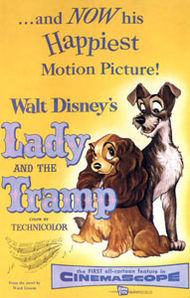The
name, Carefree (1938), pretty much
sums up the atmosphere of this light romantic comedy featuring classic movie
favorites Fred Astaire and Ginger Rogers. In this outing, as in all of their
best known films, Fred and Ginger dance on unperturbed by life's grittier
concerns, singing and dancing their way to love against a backdrop of wealth
and country club ease. Although it is not as famous as big hits like Top Hat (1935) and Swing Time (1936), Carefree
is a charming musical comedy, sure to delight fans of the genre and those who
value the breezy elegance that Rogers and Astaire embody so well.
Astaire
plays psychiatrist Tony Flagg, who agrees to see his friend's intended bride
because she keeps breaking off their engagement. Ralph Bellamy is the friend, Stephen
Arden, and, of course, Ginger Rogers appears as the uncertain bride, Amanda.
The good doctor employs various techniques to get to the root of his patient's
reluctance to go through with the marriage, but in the course of his
ministrations Amanda falls for him, putting everyone involved into a series of
awkward situations. Along the way, we get several lively song and dance
numbers, with music from Irving Berlin, and some very funny comedic scenes.
To
watch Fred and Ginger dance is to see people defy gravity. Astaire is a
lighter, more refined dancer than Gene Kelly, whose more masculine and athletic
style would eventually come to dominate the musical genre. Both approaches have
their attractions. "The Yam" dance number is an especially energetic
example of Astaire and Rogers at work, and Ginger seems to be having a very
good time singing in that one, too, even if the song is really quite silly. Astaire's
solo dance early in the film, which begins with a harmonica and ends with golf
clubs, is also great fun. This is a short picture with a limited number of
show-stopping sequences, but that might be a good thing, since the viewer never
feels overwhelmed by them.
The
movie begins with some seriously outdated comments about women from the cynical
Tony, and one has to wonder about the ethical problems of his constant
manipulation of his patient's thoughts, especially as he tries to force Amanda
to love Stephen by hypnotizing her. The film's sexist assumptions are trumped,
however, by Ginger Rogers' sparkling comedic performance. Not only is she
better looking than Astaire, but she's funnier, too, and Carefree gives her ample opportunity to demonstrate her gift for
comic mischief. Whenever Tony alters Amanda's mental state, chaos ensues, and
Rogers gleefully romps through these scenes. She's similar in many ways to
Lucille Ball, only she never seems sorry or embarrassed, even when she glides
to the altar with a black eye in the closing scene. Carefree is really Ginger's movie, and she is truly a delight to
watch. In 1941 she would win an Oscar for her performance in Kitty Foyle: The Natural History of a Woman
(1940), beating competitors as daunting as Bette Davis and Katharine Hepburn.
Watching Carefree helps us to see why
she deserved to be in such company, not merely for Kitty Foyle but for her whole career as an actress.
Director
Mark Sandrich, who led several of the Fred and Ginger pictures for RKO,
oversees the hilarity here, as well. The supporting cast members also add to
the fun. Luella Gear is great as Amanda's Aunt Cora, while the wonderful
character actor Jack Carson backs Astaire as Tony's assistant, Connors.
Clarence Kolb evokes laughs as Judge Joe, and we also get Hattie McDaniel from Gone with the Wind (1939) appearing in
yet another uncredited role as the maid, Hattie. At least she gets a good line
in during the brief time she has on screen.
Carefree earned three
Oscar nominations, including one for Irving Berlin’s song, “Change Partners and
Dance with Me,” but it went home empty-handed. For more of Fred and Ginger, try
The Gay Divorcee (1934) and Shall We Dance (1937), but be sure to catch
Ginger on her own in 42nd
Street (1933), Roxie Hart (1942),
and Monkey Business (1952). Ralph
Bellamy also appears in The Awful Truth
(1937), His Girl Friday (1940), and Dance, Girl, Dance (1940).




